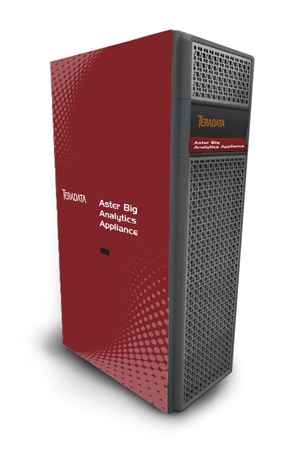
Teradata has announced the Aster Big Analytics Appliance, which combines open-source Apache Hadoop with Teradata Aster, an analytic platform that combines the SQL-MapReduce framework with data stores. The end result is a unified platform for the use of both Hadoop and MapReduce, which research firms believe will become only more popular in coming years as companies wrestle with increasingly large data sets. Teradata claims that unification of open-source Hadoop and Aster Database in a single cabinet gives IT pros more flexibility in terms of configuring their data analytics systems. It also insists that the Appliance offers up to 19 times better data throughput and 35-times-faster analytics performance than a “typical off-the-shelf commodity bundle.” The platform boasts a complete Aster Database with 50 analytical functions, and can be configured to store up to 5 petabytes of uncompressed user data for Aster and up to 10 petabytes of uncompressed user data for Hadoop. Features include massively parallel processing with embedded SQL and MapReduce engines, as well as Aster SQL-H software that links B.I. applications to Hadoop datasets. The Appliance can gather data from social networks and other platforms and combine it with structured data (such as customer databases) in order to gain deeper insight into operations. According to one analyst, that leveraging of multi-structured data is particularly useful for organizations. “When we add big analytics to big data and begin to use information that’s in other formats other than relational database rows—like Web logs, content management systems and clouds of instruments on the Internet, we wind up with data types that are compressed into formats that first need to be teased apart for analysis,” Merv Adrian, research vice president for Gartner, wrote in an Oct. 17 statement. “Gartner clients tell us that combining scored, processed ‘outside data’ with data inside our relational databases is where all the added value is.” Over the summer,
research firm IDC predicted that worldwide revenues for Hadoop-MapReduce ecosystem software would rise to $812.8 million by 2016. While that’s a notable jump from 2011 (when revenues approached $77 million), that upward curve disguises what could become a particularly aggravating fact of life for any IT vendor offering a product that incorporates Hadoop into a costly software platform: IDC’s report suggested that competition between “pure” open-source platforms and IT vendors using Hadoop as an element in a proprietary product could result in the latter being forced to lower product-licensing fees, which in turn could drive down revenues. “The Hadoop and MapReduce market will likely develop along the lines established by the development of the Linux ecosystem,” Dan Vesset, vice president of Business Analytics Solutions for IDC, wrote in a statement at the time. “Over the next decade, much of the revenue will be accrued by hardware, applications, and application development and deployment software vendors.”
Image: Teradata

